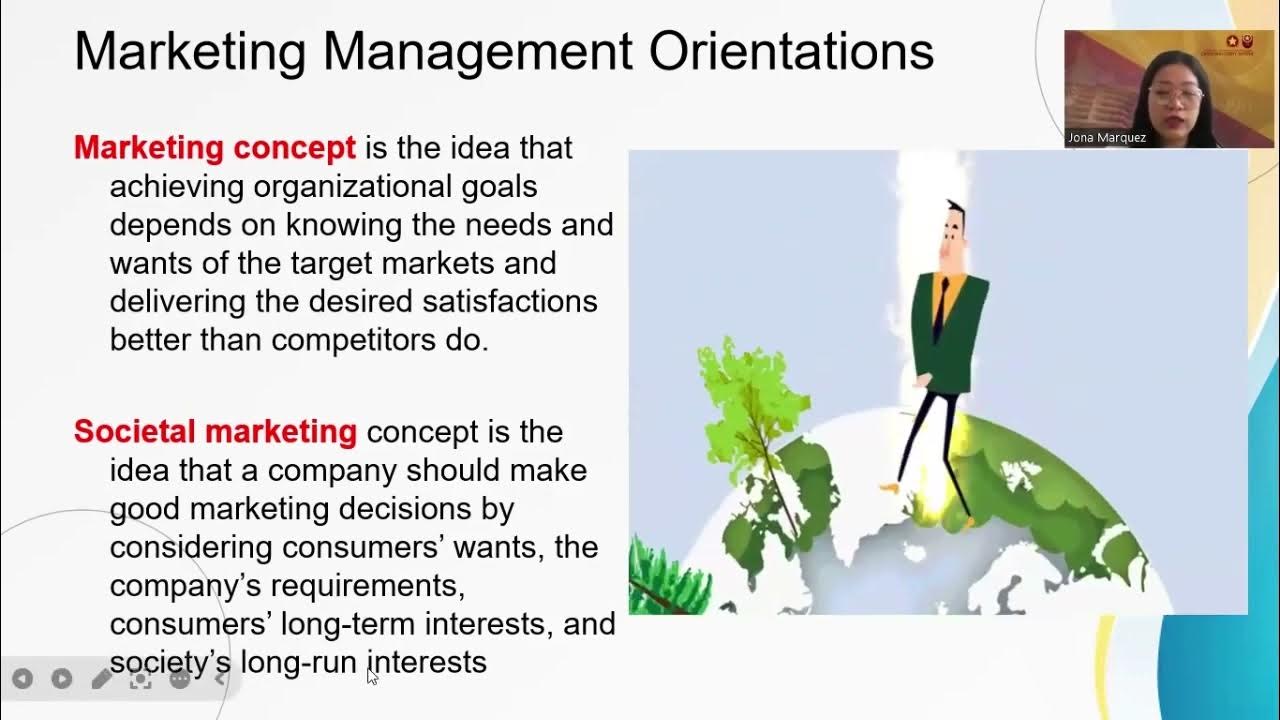Consumer Behavior and Marketing
Summary
TLDRThis lecture explores the dynamic relationship between customer behavior and marketing strategies. It covers how rapid changes in consumer behavior influence purchasing decisions, and the roles different family members play in these processes. The lecture highlights various types of consumer buying behaviors, including emotional, rational, and habitual motivations. It also discusses how factors like age, culture, and technology impact consumer decisions, and the importance of understanding these behaviors for effective market segmentation and strategy. Marketers are encouraged to adapt their strategies to meet evolving customer needs, ensuring successful engagement and growth.
Takeaways
- 😀 Understanding customer behavior is crucial as it helps businesses shape their marketing strategies effectively.
- 😀 Human behavior changes rapidly, and marketers must adapt to these changes to remain competitive.
- 😀 The buying process involves five stages: problem recognition, information search, evaluation of alternatives, purchase, and post-purchase evaluation.
- 😀 In a household, different family members play specific roles in the buying process: initiators, influencers, deciders, buyers, and users.
- 😀 Consumer behavior is unique, and businesses need to understand regional, cultural, and personal factors that influence purchasing decisions.
- 😀 Consumer decisions are driven by a mix of emotional, rational, and habitual motives, and marketers must appeal to these motives.
- 😀 Market segmentation is essential for identifying consumer groups with similar behaviors and tailoring marketing efforts accordingly.
- 😀 Marketing strategies should align with consumer behavior, focusing on product features, pricing, placement, and promotion to appeal to the target market.
- 😀 External factors, such as culture, social class, and political influences, can affect consumer behavior and should be considered in marketing strategies.
- 😀 Government regulations and public policy can shape consumer behavior and influence purchasing decisions, highlighting the role of consumer behavior in policy-making.
- 😀 Marketers should continuously evaluate consumer reactions to their strategies and make necessary adjustments to stay relevant and meet consumer needs.
Q & A
What is the main focus of Week 15's discussion?
-Week 15 focused on understanding customer behavior and its impact on marketing strategies. The session highlighted how human behavior changes and how marketers must adapt to these shifts to stay competitive.
How can understanding customer behavior benefit marketers?
-By understanding customer behavior, marketers can create more effective strategies that meet consumer needs, foster loyalty, and drive business growth.
What are the key roles in a family’s purchasing decision process?
-The key roles are: initiator (the one who suggests a purchase), influencer (the one who persuades others), decider (the one who makes the final choice), buyer (the one who physically purchases the item), and user (the one who uses the product).
What are the stages in the consumer buying process?
-The stages are: problem recognition, information search, evaluation of alternatives, purchase decision, and post-purchase evaluation.
What types of consumer decision-making behavior are discussed in the script?
-The types discussed include: complex buying behavior (high involvement and significant information search), variety-seeking behavior (low involvement but switching brands for variety), dissonance-reducing behavior (limited choices but high involvement), and habitual buying behavior (low involvement, frequent purchases).
How can marketers respond to complex buying behavior?
-Marketers can respond by providing detailed information, addressing consumer concerns, and offering personalized experiences to help consumers make informed decisions.
What are the different motivations behind purchasing decisions?
-Motivations include emotional motives (e.g., being attracted to a product's aesthetics), rational motives (e.g., searching for detailed product information), and practical or habitual motives (e.g., buying based on need or routine).
How does cultural influence affect consumer behavior?
-Cultural factors, such as regional customs, traditions, and lifestyle, play a significant role in shaping consumer preferences and their purchasing decisions.
What role do external factors, such as technology and politics, play in consumer behavior?
-External factors like technological advancements, political changes, and marketing programs can influence consumer preferences and behavior, affecting what and how people buy.
How can marketing strategies be aligned with consumer behavior?
-Marketing strategies should cater to the specific behaviors and needs of target consumers by focusing on product features, pricing, promotional tactics, and distribution methods that resonate with their preferences.
Outlines

This section is available to paid users only. Please upgrade to access this part.
Upgrade NowMindmap

This section is available to paid users only. Please upgrade to access this part.
Upgrade NowKeywords

This section is available to paid users only. Please upgrade to access this part.
Upgrade NowHighlights

This section is available to paid users only. Please upgrade to access this part.
Upgrade NowTranscripts

This section is available to paid users only. Please upgrade to access this part.
Upgrade NowBrowse More Related Video

PERTEMUAN KE 1 MATA KULIAH PEMASARAN INTERNASIONAL (RUANG LINGKUP PEMASARAN INTERNASIONAL)

01 Introduction to Consumer Behavior INFINITE WISDOM LECTURE SERIES

Pemasaran Pertamuan 2 Fix 2024b

Memahami Etika Dalam Bisnis | KOMUNIKASI BISNIS

Topic 1 - Marketing Managing Profitable Customer Relationships

Importance of Consumer Behaviour : Understanding the Buying Mind
5.0 / 5 (0 votes)